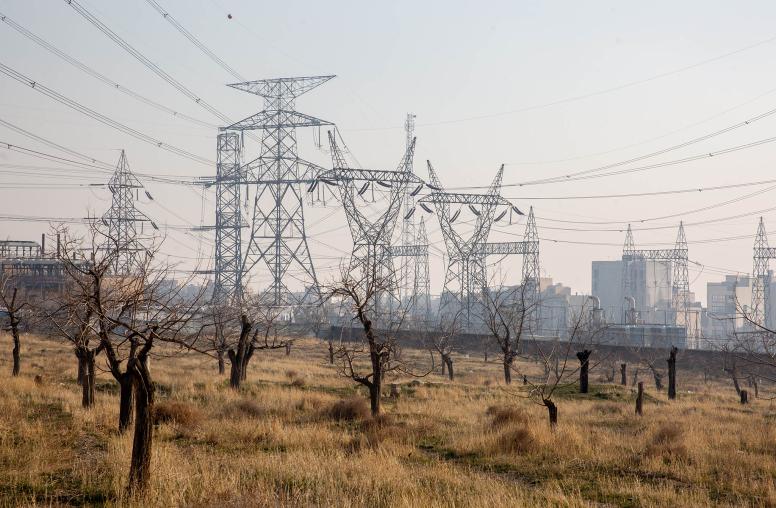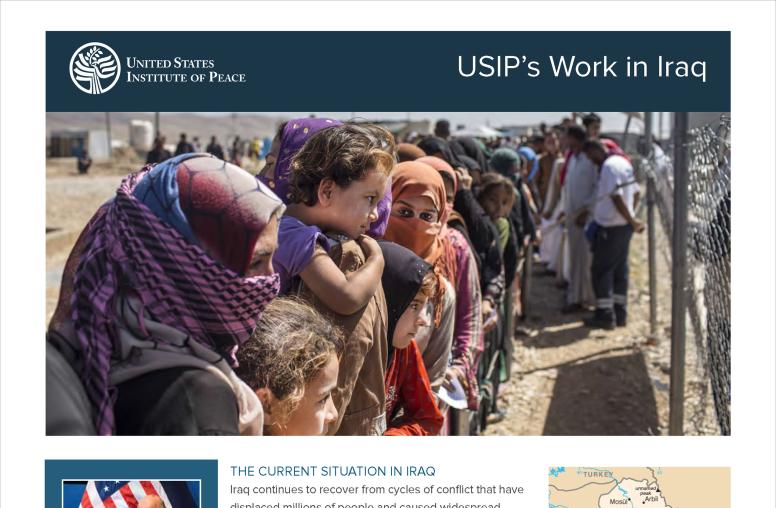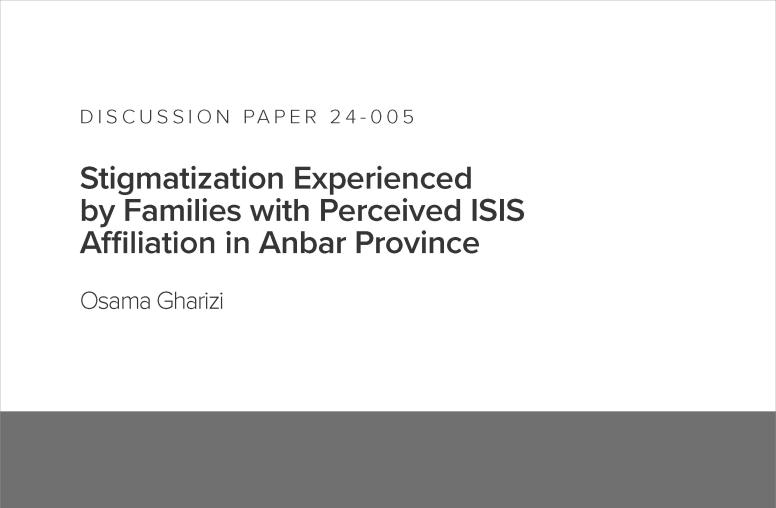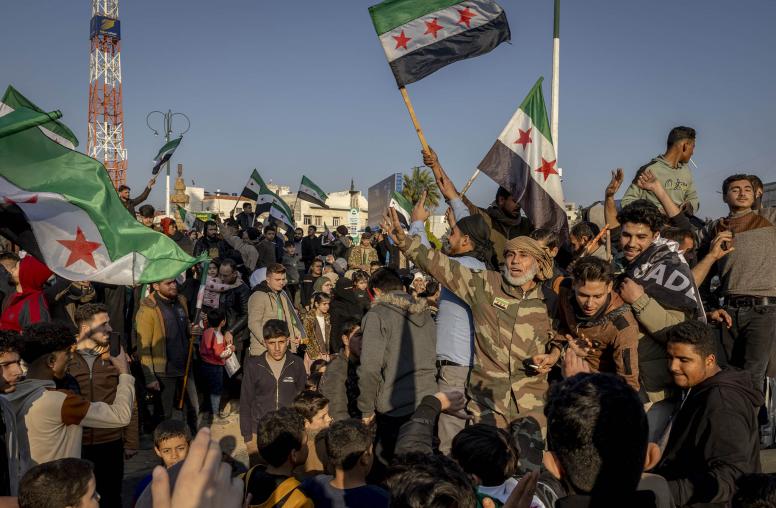U.S. Troops in Iraq after 2011?
After more than eight years on the ground in Iraq, the U.S. military pull-out is proceeding rapidly, with about 40,000 soldiers still in the country as of the end of September. Three of the Institute’s leading specialists on Iraq weighed in on the question of extending U.S. troop presence after the December 31, 2011 deadline.
The Iraqi government has not yet announced a position on extending any U.S. troop presence after December 31, 2011, the date on which the Iraqi and U.S. governments agreed that the United States would complete the withdrawal of its forces. After more than eight years on the ground in Iraq, the U.S. military pull-out is proceeding rapidly, with about 40,000 soldiers still in the country as of the end of September. Negotiations between Washington and Baghdad are underway. With time before the December 31 deadline running short, however, the security, diplomatic and political aspects of this issue will soon come to the fore.
Three of the Institute’s leading specialists on Iraq weighed in on some of these questions. Sean Kane is a senior program officer with USIP’s Iraq programs and a former political affairs officer with the United Nations Assistance Mission for Iraq. Manal Omar is the director of USIP’s Iraq, Iran and North Africa programs. Previously, she was regional program manager for the Middle East with Oxfam-Great Britain, and she worked with the United Nations and the World Bank. Elie Abouaoun is a senior program officer for institutional development based in the Institute’s Baghdad office. He worked earlier in Iraq on behalf of international nonprofit agencies.
Why has the Iraqi government not unveiled a formal position--either requesting an extension of a smaller U.S. troop presence or specifying that it does not want U.S. military forces to remain in Iraq beyond the current, agreed withdrawal deadline of December 31?
Kane: The main reason lies with the incredibly complex nature of the trade-offs implicit in the troop-extension question. Iraqis must weigh their security vulnerabilities against the deep unpopularity of a continued foreign troop presence in their country. With this decision, the Iraqis are, in effect, navigating the equally tricky task of calibrating the balance between their two most important external relationships, the United States and Iran.
Omar: The U.S. troop presence has supplied a good deal of psychological security for Iraqis, who fear that their new democracy is vulnerable to internal tensions flaring up again into violence. More important, Iraqis are concerned about interventions from neighboring countries and that the Iraqi military might not be able to provide sufficient protection, including domestic intelligence.
How are Iraq’s key political parties and other forces positioning themselves on the question of a possible, continued U.S. military presence in the country?
Kane: The Kurdish political parties favor a significant, continued U.S. presence. The Sadrists insist that all U.S. forces leave. The remainder of the political spectrum generally favors a limited training mission but is reluctant to say so publicly. Prime Minister Nouri al-Maliki wants to avoid sole responsibility for a politically difficult decision. Meanwhile, the Iraqiya coalition and its leader, Ayad Allawi, appear to be conditioning their support for a government decision to extend the U.S. presence on power-sharing concessions that they want from Prime Minister Maliki.
U.S. officials have said that no decision on a future U.S. troop presence in Iraq has been made and that discussions with Iraqi officials continue. Have Obama administration officials publicly expressed a preference for any particular scenario?
Kane: No, they have not. However, they have suggested that the U.S. government will positively consider a request by the Iraqi government—but that it must first make such a request. News media reports indicate that the Lloyd Austin, the commanding general of U.S. Forces-Iraq, has proposed a follow-on force of 14,000-18,000 troops and that Secretary of Defense Leon Panetta supports a plan to keep 3,000 to 5,000 troops in Iraq. Neither report has been publicly confirmed, and the White House say that no decision has been made yet.
With the prolonged uncertainty over the Iraqi government’s position, and the approaching withdrawal deadline, what is the impact of this delay on U.S. planning and flexibility for the post-2011 period? Will it soon be too late for the U.S. to respond effectively to an Iraqi request for maintaining some U.S. troops, if that is what Iraq decides? And will the U.S. Embassy in Baghdad be able to protect itself as of January 1 if the U.S. troop withdrawal is completed?
Kane: It would not necessarily be too late for the United States to respond to an Iraqi request, although it could substantially increase the cost and effort required. The U.S. Embassy in Baghdad bases its planning on the assumption that the U.S. military presence in Iraq will drop to zero. Groups such as the Commission on Wartime Contracting have raised questions about the State Department’s contracting capabilities and the consequences of having to employ up to 8,000 private security contractors, but the Embassy will not be caught by surprise by the need to protect itself.
How will the level and role of any remaining U.S. troops affect efforts to moderate Iraq’s Arab-Kurdish tensions and Shiite-Sunni tensions?
Kane: The ability of U.S. troops to directly moderate Arab-Kurdish tensions is affected by the troop drawdown. The physical presence of U.S. forces in combined checkpoints in northern Iraq's disputed territories ended in August. American efforts to moderate this dispute will now necessarily be more subtle. For example, U.S. forces might condition the military cooperation sought both by Baghdad and Erbil on the Iraqi Army and the Kurdish Peshmerga avoiding unilateral steps in the disputed city of Kirkuk. As for Sunni-Shiite tensions, U.S. troops have not been directly involved in policing these conflicts since they withdrew from Iraqi cities in June 2009. However, the sizeable U.S. troop presence has provided some psychological reassurance, particularly to the Sunnis, that no one group will be able to completely overturn the system and dominate the other. It remains to be seen how this reassurance might be sustained after 2011.
Omar: The international community will need to monitor the relationship of the Iraqi government to civil society, including the independent Iraqi media, as an indicator of stability in the country. The stronger the civil institutions, the stronger the assurance of legitimate avenues for participation of marginalized groups to engage with the government. If avenues for participation are blocked, many groups will express their grievances by returning to violence.
If some U.S. forces remain behind, what is expected to be their role? Would it be for training only or would they also participate in counterterrorism or other operations that bring them into contact with armed adversaries?
Kane: If some U.S. forces remain behind after December 31, Iraqis appear most interested in having them concentrate on a specific set of missions. These include: 1) helping the Iraqi Air Force defend Iraq's airspace; 2) helping the Iraqi Navy protect the country's financial lifeline--its oil export platforms in the Gulf--from terrorist attack; 3) helping Iraq develop an external defense deterrent through training on weapons systems and combined arms maneuvers; and 4) intelligence cooperation and targeting for counterterrorism and counterinsurgency operations. It is conceivable that the last activity could involve background participation by U.S. forces. While the Kurdistan regional government would like to see U.S. troops continue their peacekeeping mission in northern Iraq, national government officials in Baghdad seem to be less interested in this sort of role, in part because the joint security mechanism is seen as legitimating the presence of Kurdish Peshmerga forces outside of the Kurdistan region.
Abouaoun: Within the Iraqi military, some officers and soldiers are reflecting a growing sense of frustration and a lack of motivation. Many are looking to just carry out routine assignments and avoid trouble with militia groups. This is affecting the overall effectiveness of the military.
What are the trends in the levels of violence directed against U.S. forces and the U.S. civilian presence from insurgent and other radical armed groups in the run-up to the scheduled U.S. withdrawal? In particular, how has the al-Sadr movement responded to the question of a possible, future U.S. military role in Iraq?
Kane: Earlier this summer, violence directed against U.S. forces spiked as Shiite militias tried to create a narrative that they were driving American troops out of the country. Some 14 U.S. troops were killed in July, the highest number in three years. However, after increased political pressure from the United States and an Iraqi government crackdown on the militias, no U.S. troops were killed in August--the first month free of U.S. combat deaths since the invasion in 2003. The Sadr movement has strongly opposed any future U.S. military role, including leaving behind American trainers. Generally, it has also not drawn a distinction between the U.S. military and the expanded American civilian footprint that will take its place. Muqtada al-Sadr himself has threatened to reactivate his Mahdi Army if U.S. forces stay in Iraq, though his warnings have been somewhat ambiguous.



